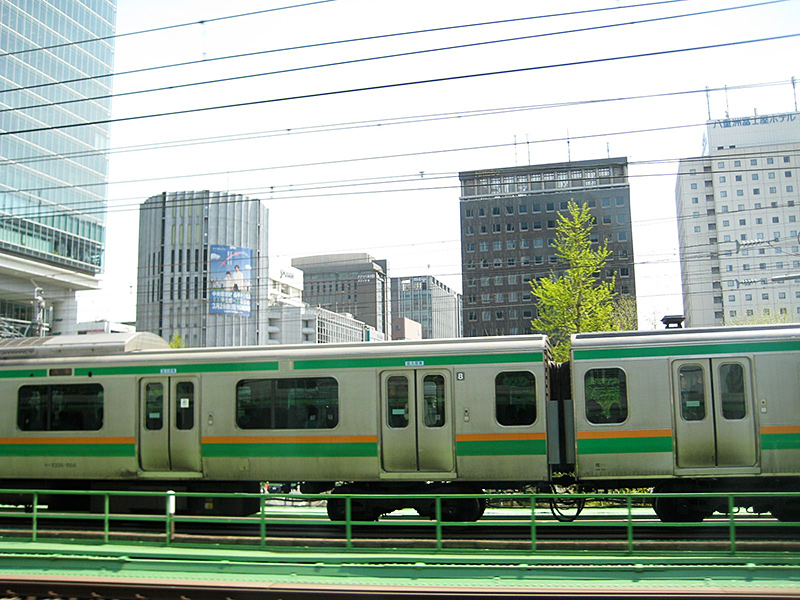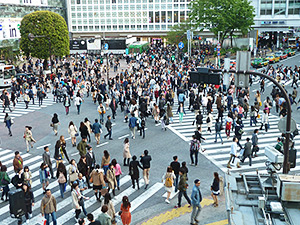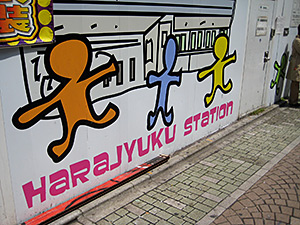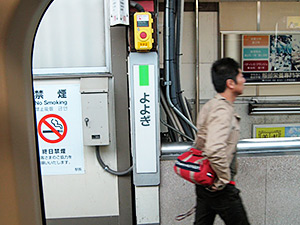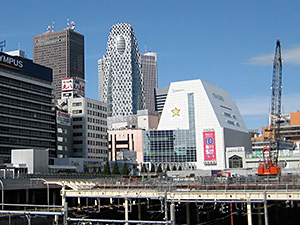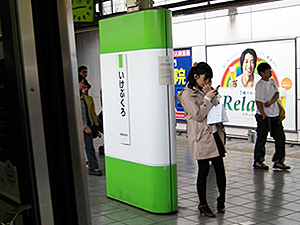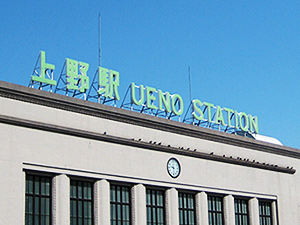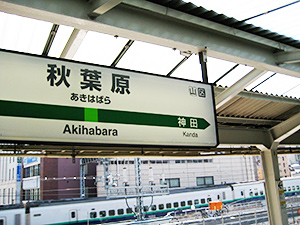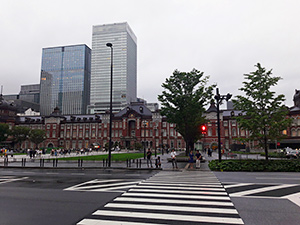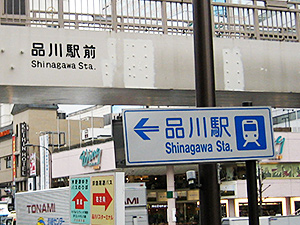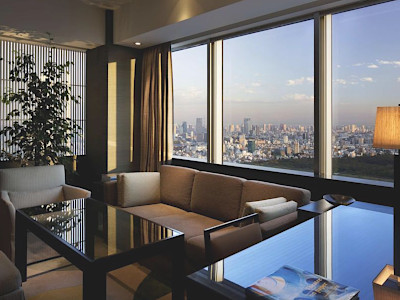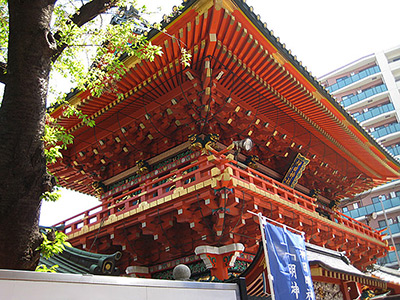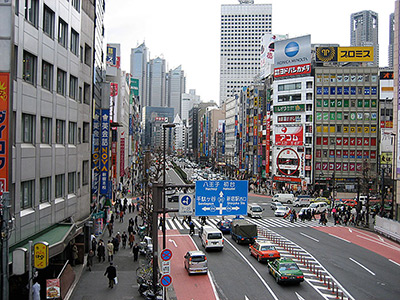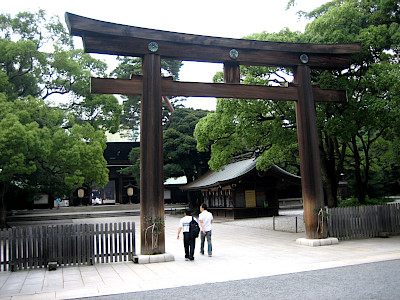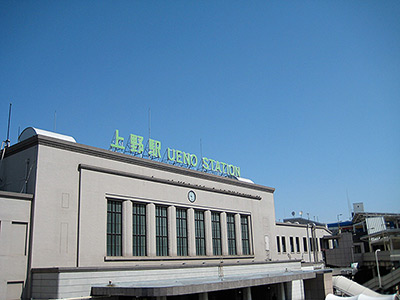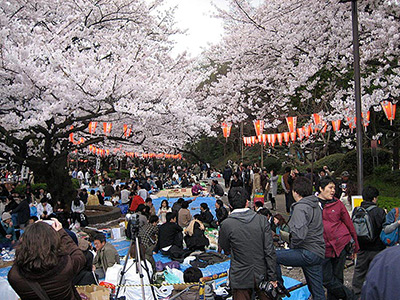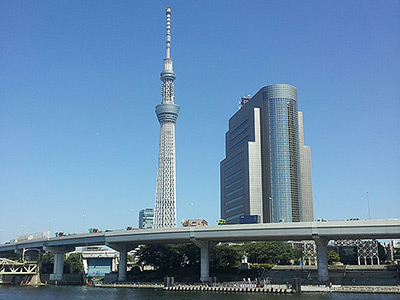Yamanote Line in Tokyo
This post can contain affiliate links, which means that we may receive a small commission if you make a purchase using these links.
Facts & Figures
The Yamanote Line in Tokyo consists of 30 stations and connects the most important city centers in the capital like Shibuya, Shinjuku, Ikebukuro, and Ueno. It is operated by the East Japan Railway Company. The circular railway line has a total length of 34.5 km and it takes approx. 1 hour to finish the loop. The green-colored coaches of the Yamanote Line are easily recognizable. Millions of passengers use this line every day and you should try it out during rush hours:) The following overview will give you more detailed info about every single station.
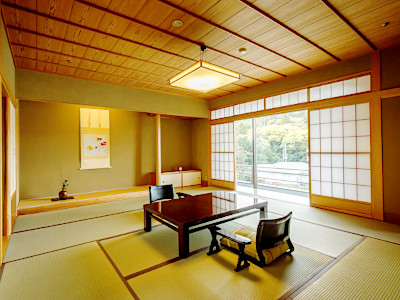 Best Places to Stay in Tokyo >
Best Places to Stay in Tokyo >
- Overview of the 30 Stations along the Yamanote Line:
- 1. Shibuya, 2. Harajuku, 3. Yoyogi
- 4. Shinjuku, 5. Shin-Okubo, 6. Takadanobaba
- 7. Mejiro, 8. Ikebukuro, 9. Otsuka
- 10. Sugamo, 11. Komagome, 12. Tabata
- 13. Nishi-Nippori, 14. Nippori, 15. Uguisudani
- 16. Ueno, 17. Okachimachi, 18. Akihabara
- 19. Kanda, 20. Tokyo, 21. Yurakucho
- 22. Shimbashi, 23. Hamamatsucho, 24. Tamachi
- 25. Takanawa Gateway, 26. Shinagawa, 27. Osaki
- 28. Gotanda, 29. Meguro, 30. Ebisu
1. Shibuya
Shibuya is a very popular shopping and entertainment district, especially for the younger people of Tokyo. It is also known as the fashion center of Japan. The station itself was built in 1885 and handles over 2.4 million passengers on a weekday. The famous Shibuya Crossing nearby is one of the most popular photo spots in the capital.
Read More
2. Harajuku
Harajuku Station gives you access to many popular tourist destinations and shopping facilities. The area around the station is the hotspot for fashion-crazy teenagers, which you can find on Takeshita Street (Takeshita Dori). Nearby are the Meiji Shrine (the most famous Shinto shrine in Tokyo), Omotesando (Tokyo's Champs-Elysees), Yoyogi Park, and much much more.
Read More
3. Yoyogi
Yoyogi Station was built in 1906. Approx. 100000 passengers use this popular station daily. From here you can easily access the north entrance of the famous Meiji Shrine and the Yoyogi Park. This will be also an important transportation hotspot for the Tokyo Olympic Games in 2021.
Read More
4. Shinjuku
The Shinjuku district is my favorite part of Tokyo. The high density of skyscrapers here is amazing. Shinjuku Station is with 3.64 million passengers a day the busiest in the world. The station is surrounded by endless shopping and entertainment facilities. The neon-lights atmosphere at night is a must-see. Enjoy also the beautiful park called Shinjuku Gyoen. My tip: Stay one night in the nearby Park Hyatt Hotel and enjoy the great view from the top floor.
Read More
5. Shin-Okubo
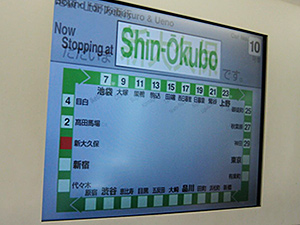
Shin-Okubo Station gives you access to a Korean town within the Shinjuku district. You will find in this nice neighborhood many K-pop shops, the best Korean restaurants in the city, beauty salons (K-beauty), and much more. It is a very popular place for young people. My tip: Check out the most popular shopping street called Okubo-dori near the Shin-Okubo Station.
6. Takadanobaba
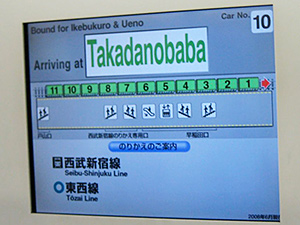
Takadanobaba Station is with 680000 passengers per day one of the busiest stations in Tokyo. It is the connecting point for the JR Yamanote Line, the Seibu Shinjuku Line, and the Tokyo Metro Tozai Line. The famous Waseda University can be found nearby and thousands of students pass through here every day. The beautiful Toyama Park in the neighborhood is a popular spot during the cherry blossom season. The park features the tallest mountain (46m) within the Yamanote Line loop. My tip: Stay in a nice ryokan near Toyama Park and explore the area.
7. Mejiro
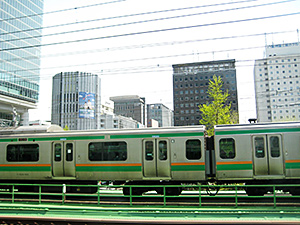
Meijro Station is located in a quiet wealthy upperclass neighbourhood. The prestigious Gakushuin University can be found here. Many government officials call this place their home. Stroll around and enjoy the architectural style of the luxurious houses and apartment buildings. Meijro is not full of sightseeing spots, but you can spend a nice afternoon here.
8. Ikebukuro
Ikebukuro Station is with 2.71 million passengers per day the second busiest station after Shinjuku. This huge commercial and entertainment district in Tokyo has so many things to offer. Here are some of my highlights: Sunshine City (shopping complex), observation deck Sunshine 60 with amazing views over the city, Sunshine Aquarium, Otome Road - a hot spot for the otaku culture with manga, anime, and cosplay shops, Toyota showroom Amlux and much much more.
Read More
9. Otsuka
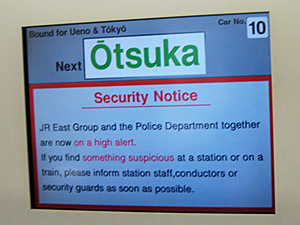
Otsuka Station in the northern top part of the Yamanote Line loop opened its doors to the public in 1903. Nearly 60000 people use this station per day. It is mainly a residential area with some nice temples like the Gokokuji temple. If you like a quieter area for your stay in Tokyo and you still want to be close to the major hubs then I can only recommend you this place.
10. Sugamo
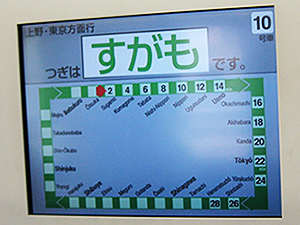
Sugamo Station is located within the Toshima ward in Tokyo and is served by the Yamanote Line and Toei Mita Line. It opened its doors to the public in 1903. Approx. 77000 passengers using Sugamo Station daily. The big shopping district nearby with the well-known street called Jizo-dori is very popular with older people. The area got the funny name Harajuku for old ladies:)
11. Komagome
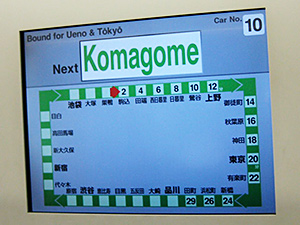
Komagome Station was opened to the public in 1910. It gives you access to one of my personal garden highlights in Tokyo - the Rikugien Garden. Check out the picture gallery and you know why. The Kyu-Furukawa Gardens can also be found nearby. The station itself is served by the Yamanote Line and Tokyo Metro Namboku Subway Line. I liked the quiet, safe, and more residential neighborhood.
12. Tabata
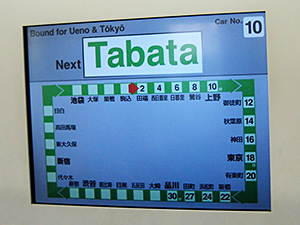
Tabata Station was opened to the public in 1896 and is served by the JR Yamanote Line and Keihin-Tohoku Line. The small station has approx. 45000 passengers per day. The area around Tabata Station is known for its huge concentration of artists and writers. The Tokyo University of the Arts is located nearby. As a visitor, you should also check out the well-known Memorial Museum of Writers and Artists. If you want to spend some money go to the Atrevie shopping mall close to the north exit.
13. Nishi-Nippori
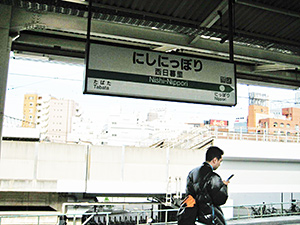
The neighborhood of Nishi-Nippori is more quiet and many important cemeteries can be found in this area, which stretches to Ueno Park and Ueno Station. Some of the Tokugawa shoguns were buried there. Leave the busy places of Shinjuku or Shibuya behind you and stroll through this more residential area. The Nishi-Nippori Station opened its doors in 1905 and serves daily approx. 100000 passengers.
14. Nippori
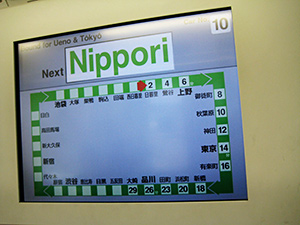
Nippori Station is a major transportation hub and the intersection of the JR and Keisei Lines. It opened its doors in 1969 and approx. 100000 passengers are served daily. From there I went to the historic area of Yanaka and the Shimogoinden Bridge (near the north-west exit). Every day over 2500 trains can be seen from the bridge. Within a short walking distance, you will find the Nippori Fabric Town with many fashion and fabric-related shopping facilities, and the Yanaka Ginza shopping street.
15. Uguisudani
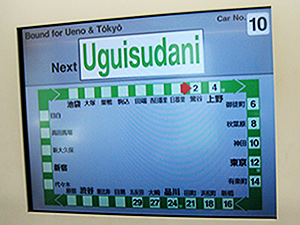
The small Uguisudani Station near Ueno started operating in 1912 and is served by the JR Yamanote and Keihin-Tohoku Lines. The station is located at the northern end of Ueno Park and is the perfect starting point to enjoy the cherry blossom season there in April. Nearby can be found the Uguisudani Music Campus, Tokyo University of Fine Arts, Tokyo University Art Museum, Japanese National Museum, and one of the biggest love hotel districts in Tokyo.
16. Ueno
Ueno Station was built in 1883. I usually stay in this area during my visits to Tokyo. This major railway station with its approx. 182000 daily passengers gives you access to the beautiful Ueno Park with its zoo, and many outstanding museums like the Tokyo Metropolitan Art Museum, Tokyo National Museum, and National Museum of Western Art. You should come here during the cherry blossom season. The Ueno district in some parts preserved the atmosphere of old Tokyo and I enjoy exploring these hidden places. There are an endless number of shopping and eating facilities around the station.
Read More
17. Okachimachi
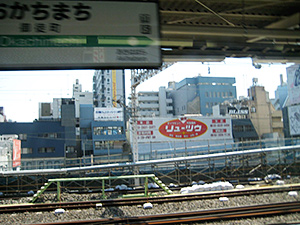
Okachimachi Station was built in 1925 and is served by the JR Yamanote Line and Keihin-Tohoku Line. Approx. 68000 passengers use this station daily. The neighborhood of the station is known for its excellent shopping malls and restaurants. Check out the famous open-air market Ameya-Yokocho with its many stalls. At the north exit is Takeya the oldest discount store in Tokyo located. You should also visit the Shitamatchi Museum. It displays the life and history of downtown (shitamachi).
18. Akihabara
Akihabara Station was in the beginning (1890) used as a freight terminal and in 1925 opened for passengers. The numbers have grown now to approx. 240000 passengers daily. This district of Tokyo, also known as the Electric Town, is a shopping heaven for computer and anime fans. The atmosphere is unique and you should enjoy the Otaku Culture there.
Read More
19. Kanda
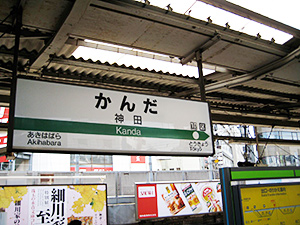
Kanda Station opened its doors in 1919 and is serving now nearly 98000 passengers daily. I came here to visit the nearby Kanda Shrine (Kanda-myojin). It is a beautiful place with 1300 years of history. One of the three great Tokyo Shinto festivals is held here. It is called the Kanda Matsuri. 200 portable Shinto shrines (mikoshi) are carried around and the parade is joined by dancers and musicians. Another tip: The Mitsui Memorial Museum, dedicated to Japanese and Asian art, can be found within a short walking distance from Kanda Station.
20. Tokyo
Tokyo Station was built in 1914 and is the main inter-city rail terminal in Tokyo. Approx. 4000 trains reach the station every day, which makes it the busiest in the country. On average 467000 passengers are served daily. The famous brick building of the station is a landmark sign in Tokyo. Nearby can be found many sightseeing highlights like the Imperial Palace, Tokyo International Forum, Imperial East Gardens, Mitsubishi Ichigokan Museum, and much more.
Read More
21. Yurakucho
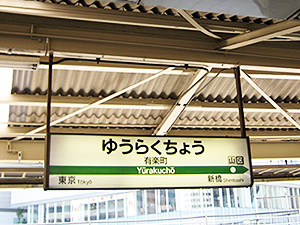
Yurakucho Station is located in the Chiyoda district and opened its doors in 1910. It serves approx. 167000 passengers per day. The subway station was added in 1974. The Tokyo International Forum on the west side is my must-see recommendation for you. It is a masterpiece of modern architecture. One of the largest Bic Camera electronic stores in Tokyo can be found nearby. Another highlight of Yurakucho Station is the unique restaurant district (Gado-shita), which stretches over 700 meters underneath the elevated rail track of the JR Yamanote Line.
22. Shimbashi
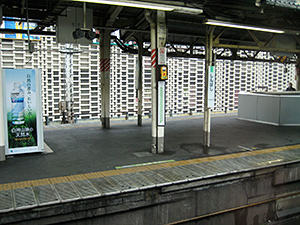
Shimbashi Station is located in the Minato Ward of Tokyo. From here you can reach the famous shopping district of Ginza within a 10 minutes walk. From the east exit, you can easily access the impressive skyscrapers area of Shiodome. Enjoy there the fancy restaurants and cafes. The station itself was built in 1909 and the Tokyo subway was added in 1934. Approx. 255000 passengers are served per day in this major interchange railway station.
23. Hamamatsucho
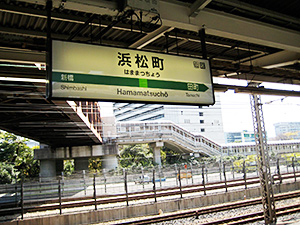
Hamamatsucho Station was built in 1909 and serves daily approx. 155000 passengers. From here you can easily access the Haneda Airport via the Tokyo Monorail. The area around the station is a bustling business district with many skyscrapers like the World Trade Center Building. My highlights in the neighborhood were the famous Hamarikyu Gardens and the former imperial Kyu Shiba Rikyu Gardens. Hamarikyu Garden (250165 square meters) was originally built as the residence of the Shogun Tokugawa family during the Edo Period (1603-1867). From Hamamatsucho Station you can also easily access the Tokyo Bay area. My tip: Take a water taxi to the large artificial island of Odaiba.
24. Tamachi
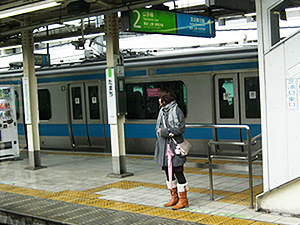
Tamachi Station was my starting point for a 10-minute walk to the famous Rainbow Bridge. This landmark in Tokyo is my must-see recommendation for you. The station itself was built in 1909 and serves daily approx. 144000 passengers. You should also try out one of the delicious soba noodle dishes there. Within the Tamachi area, you will find the Tokyo International School, the Tokyo Institute of Technology, and the headquarters of companies like NEC, Morinaga, and Nippon Kinzoku. You can also easily access the Shibaura district from the station. It is a redeveloped land close to the Tokyo Bay.
25. Takanawa Gateway

The new Takanawa Gateway Station was opened to the public on March 14th, 2020. The station is served by the JR Yamanote Line and Keihin-Tohoku Line. It is the first new station on the Yamanote Line since 1971. Famous architect Kengo Kuma created the unique design. He was also responsible for the design of the New National Stadium in Tokyo. The station is part of a huge redevelopment project called Global Gateway Shinagawa, which will see the surrounding area transformed into a business district and major transportation hub. My tip: Check out the nearby Takanawa Shrine and Sengaku-ji Temple.
26. Shinagawa
Shinagawa Station is one of the major transportation hubs in Tokyo. From here you have access to the Narita Airport and Haneda Airport. Many Shinkansen lines at the station connect a huge number of destinations in Japan. A lot of excellent hotels like the Grand Prince Hotel Takanawa can be found nearby. The two exits of the station are called Konan (east side) and Takanawa (west side). The dining and shopping possibilities there are endless. Shinagawa Station was built in 1872 and serves now approximately 380000 passengers per day.
Read More
27. Osaki
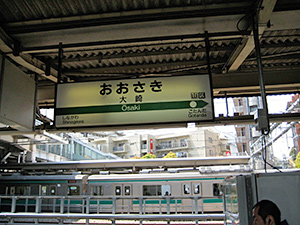
Osaki Station opened its doors in 1901 and serves now approx. 144000 passengers per day. My tip: If you are looking for a great spot for panoramic views over the bayside of Tokyo check out the newer Gate City Ohsaki with its rooftop plaza. It is just a one-minute walk from the station. Other highlights are the Osaki New City, which includes a huge shopping mall, O Museum, and souvenir shops, and the Art Village Osaki with its unique View Tower and Central Tower. For all gamers out there, the headquarters of SEGA is located near Osaki Station.
28. Gotanda
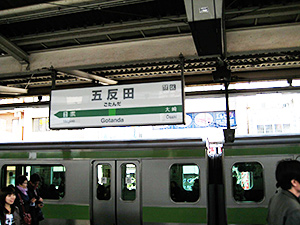
Gotanda Station separates the area in West Gotanda and East Gotanda. West Gotanda is a modern business district with skyscrapers, shopping malls, and hotels. East Gotanda has a more residential neighborhood feeling. The station was built in 1911 and serves now daily approx. 132000 passengers. Gotanda was also known as one of the older red-light districts in Tokyo, but this has changed through many redevelopment projects in the area.
29. Meguro
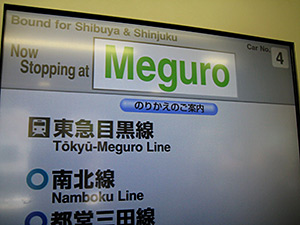
Meguro Station gives you access to the very popular and more upscale neighborhood of Nakameguro (a 10-minute walk). The Meguro River flows through the ward and is a well-known spot for locals and tourists during the cherry blossom season. Walk along the wonderful river promenade and you will know why. Do not miss the Ryusenji Buddhist Temple nearby with its famous Meguro-fudoson statue. The station itself was built in 1885 and serves approx. 107000 passengers daily. Many universities have campuses in Meguro like Tokyo Institute of Science and Technology, Tokyo University, Toritsu University, and Gakugei University.
30. Ebisu
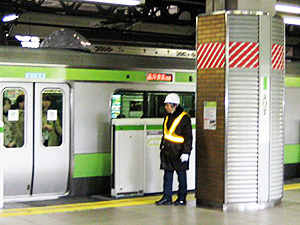
Ebisu Station was built in 1901 and used as a freight terminal for the nearby Yebisu Beer factory. The company name was then used for the station. Passengers could board the trains from here in 1906. Four train lines serve now approx. 134000 passengers a day, which are JR Yamanote, JR Saikyo, JR Shonan-Shinjuku, and Tokyo Metro Hibiya Line. Ebisu Station is located on the ground floor of the Atre Ebisu shopping center. The Yebisu Garden Place, a shopping and dining complex is the major highlight close to the East Exit of the station. Check out the Joel Robuchon Restaurant (rated with three Michelin stars) or the 200m long shopping street called Ichibankai (starts at the West Exit).

